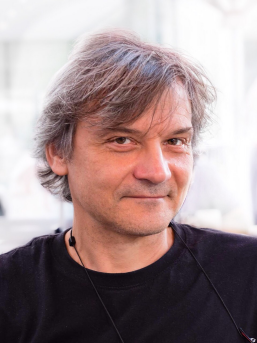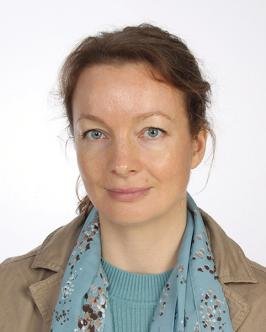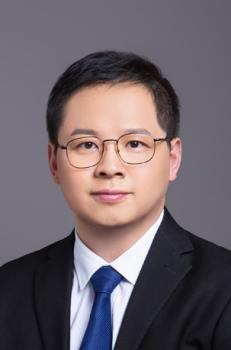The 5th ISDE International Lectures, with the theme of "Optical Quantum Vector Observations of the Digital Earth", was given on July 3, 2023, 9:00 - 10:30 am (CEST). At this event, three speakers were invited to share their knowledge on the 3D vector remote sensing mechanism and optical quantum resolution, the characteristics of Earth atmosphere and surface based on multi-angular satellite polarimetry, and the meteor phenomena in the atmosphere.
Invited Speakers:
Lei Yan (Peking University, China)
Oleg Dubovik (University of Lille, France)
Maria Gritsevich (University of Helsinki, Finland)
Moderator:
Wei Chen (China University of Mining & Technology, China)
Programme:
9:00-9:05 | Welcome and Introduction |
9:05-9:25 | Topic: Digital Earth source: 3D vector remote sensing mechanism and its optical quantum resolution Speaker: Lei Yan (Peking University, China) |
9:25-9:45 | Topic: The potential of the characteristics of Earth atmosphere and surface using multi-angular satellite polarimetry Speaker: Oleg Dubovik (University of Lille, France) |
9:45-10:05 | Topic: Meteor phenomena in the atmosphere Speaker: Maria Gritsevich (University of Helsinki, Finland) |
10:05-10:30 | Group Photo Q&A |
Short Bio of Invited Speakers:

Lei Yan
Peking University, China
Lei Yan is the professor of the School of Earth and Space Science, Peking University. Prof. Yan is an Academician of Russian Academy of Natural Sciences and the Chairman of journal Expert Steering Committee of IJRS. He successively served as director of Beijing Key Laboratory of Space Information Integration and 3S Engineering Application and Deputy Director of Academic Committee. He has won 18 awards, including the National Technical Invention Second Prize, and Geneva International Invention Exhibition Jury. He is also the chairman of the standards for polarization remote sensing ground material processing (T/CI003—2021), the Chairman of international standard, IEEE polarization remote sensing international standard (IEEE-P1937.7), and the chairman of IEEE polar coordinate international standard (IEEE-P1937.11). He has more than 310 research papers published and more than 150 research papers included in SCI / EI journals. He also got more than 30 International or China invention patents (the first inventor). He has published 10 monographs.

Oleg Dubovik
University of Lille, France
Oleg Dubovik specializes in retrievals of aerosol properties from satellite, ground-based, and airborne remote sensing observations. Dr. Dubovik has received his PhD. from Institute of Physics, Minsk, Belarus in 1992. Then, he worked in Japan for two years, participating in ADEOS/ILAS algorithm developments, and nine years in USA at GSFC/NASA research center. Since 2006, Dr. Dubovik works in the Laboratoire d'Optique Atmosphérique, Université Lille, France as CNRS “Research Director”. Main scientific accomplishments of Dr. Dubovik include following developments: - aerosol retrieval algorithm for AERONET federated network of ground-based radiometers (https://aeronet.gsfc.nasa.gov); - one of pioneering climatologies of absorption and optical properties of ambient tropospheric aerosol; - popular efficient software for modeling scattering by non-spherical aerosol particles. Dr. Dubovik focuses on refinement of methodological aspects of numerical inversion for needs of remote sensing by applying elaborated statistical optimization approach. The developed principles were recently realized GRASP open source algorithm (https://www.grasp-open.com/) that can be applied to retrieval detailed aerosol properties fro diverse observations including both passive and active observations from satellite or ground. For example, GRASP is used in multiple algorithm development for deriving extended set of parameters from ground-based observations by lidar and radiometer (e.g., in operational processing frame of European ACTRIS infrastructure) satellite observations by POLDER-1,-2,-3, MERIS and AATSR/Envisat, Sentinel -3, -4, -5P, 3MI/EPS-SG, MAP/CO2M, etc.
Dubovik is (co-) author of 5 book chapters and more than 260 publications in peer-reviewed scientific journals . Dr. Dubovik has 4 first-authored papers have more than 1000 citations each. Dr. Dubovik is a recipient of NASA Medal for Public Service that recognizes exceptional contributions to NASA mission. In 2010 Dr. Dubovik was elected a fellow of American Geophysical Union.

Maria Gritsevich
University of Helsinki, Finland
Prior to coming to University of Helsinki, Maria Gritsevich was appointed as a Senior Scientist at the Lomonosov Moscow State University, at the Ural Federal University and at the Russian Academy of Sciences. She has also worked as a research fellow at the European Space Agency (ESA/ESTEC, with an international ESA fellowship granted to only one researcher a year) in collaboration with ESA Meteor Research group led by Dr. Detlef Koschny, and as a Specialist Research Scientist at the Finnish Geospatial Research Institute. She gained crucial research experience by joining international collaborative projects, such as FP7 RASTAS SPEAR “RAdiation-Shapes Thermal protection investigAtionS for high-SPeed EArth Re-entry” http://www.rastas-spear.eu/, NEOShield, and EuroPlaNet. Her scientific work includes development of novel methods to interpret and obtain meteor observations, identification of meteorite falls, account for atmospheric conditions, orbit computation, laboratory work with extraterrestrial materials as well as light scattering experiments.
Short Bio of Moderator:

Wei Chen
China University of Mining & Technology, China
Wei Chen is an associate professor of China University of Mining & Technology, Beijing. He has received his bachelor’s degree in geographical information system in 2008 from Beijing Normal University, and Ph.D degree in remote sensing in 2013 from Peking University. His major research interest involves polarimetric remote sensing, quantitative remote sensing theory and applications. Since 2013, he has published more than 40 papers and serves as reviewers for more than 20 international journals. He has also served as guest editors for International journal of Remote Sensing and Atmosphere.
Extended Materials:
AERONET Federated Network of Ground-Based Radiometers:
https://aeronet.gsfc.nasa.gov/
GRASP Open Source Algorithm
RAdiation-Shapes Thermal protection investigAtionS for high-SPeed EArth Re-entry Project:

2006-2023 All Rights Reserved 京ICP备06045536号-1 京公网安备 11010802041631号